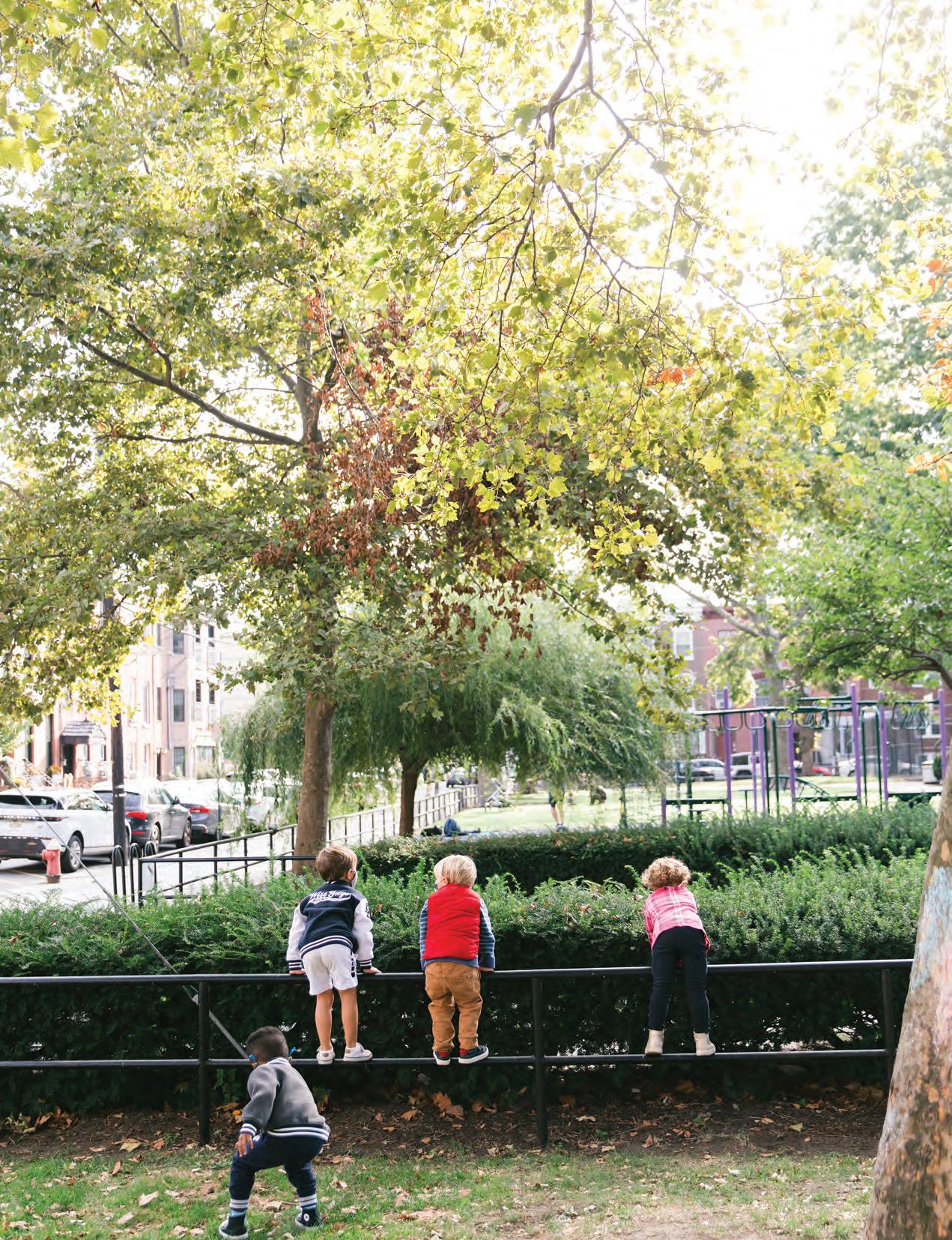
2 minute read
PE & Health Education
“We have such a brief opportunity to pass on to our children our love for this Earth and to tell our stories. These are the moments when the world is made whole. Time in nature is not leisure time; it’s an essential investment in our children’s health. Can we teach children to look at a flower and see all the things it represents: beauty, the health of an ecosystem, and the potential for healing?” — Richard Louv, Last Child in the Woods: Saving Our Children from Nature-Deficit Disorder
At Mustard Seed School, classroom teachers and our PE teacher work together to provide opportunities for students to develop their physical skills. Teachers layer in learning about keeping our bodies healthy into daily life together, encouraging children in nutrition, self-care, and enjoying physical activity. Students work with a PE teacher once a week to receive skill instruction. PE activities attend to frequency, intensity, time and type to develop fitness. Every day, as the weather is conducive, children go outside to play.
Advertisement
Standards • Effective communication may be a determining factor in the outcome of health- and safety-related situations. • Understanding of fundamental concepts related to effective execution of actions provides the foundation for participation in games, sports, dance, and recreational activities. • Demonstrate changes in time, force, and flow while moving in personal and general space at different levels, directions, ranges, and pathways. • Respond in movement to changes in tempo, beat, rhythm, or musical style. • Teamwork consists of effective communication and other interactions between team members. • Practicing appropriate and safe behaviors while participating in and viewing games, sports, and other competitive events contributes to enjoyment of the event.

FIRST GRADE
Students begin the year developing basic movement skills (hopping, skipping, side-to-side) as they play group games. They learn a variety of games and practice safe movement and tagging. They move on to ball handling skills (kicking, dribbling, tossing, throwing, catching, volleying, striking) and engage in skill building and partner activities to practice these skills. Jump rope and parachute activities are introduced toward the end of the year. Students are encouraged to develop greater stamina throughout the year, and often take the games and skills learned into their outdoor playtimes.
SECOND AND THIRD GRADE
Students are introduced to ball skills, including underhand and overhand throwing. They work on tossing, catching, and throwing at stationary as well as moving targets. Students explored spatial and body awareness. They participate in challenging activities (Gaga, Garbage Pickup, Secret Agent Tag, and Rock-Paper-Scissors sprints) where they could enjoy movement and cooperate with a partner. In addition, students focused on kinesthetic movements (learning through physical activities) to improve in moving side to side (lateral quickness) and in using sensory cues (visual and auditory).
Students work on the necessary knowledge and skills to establish and maintain physical fitness, participate in physical activity, and maintain personal health. They work on complex skills (running, hand and foot dribbling, and muscular endurance) to develop an understanding of basic and compound movements. The students apply these skills in the context of games (hula hoop fort toss, ring toss, spud ball, four corners treasure) and movements to help with flexibility and coordination. The focus this term was for students to integrate these skills in order to perform during physical activities and build a relationship of skill practice, skill development, and the use of rhythmic patterns in sports.







